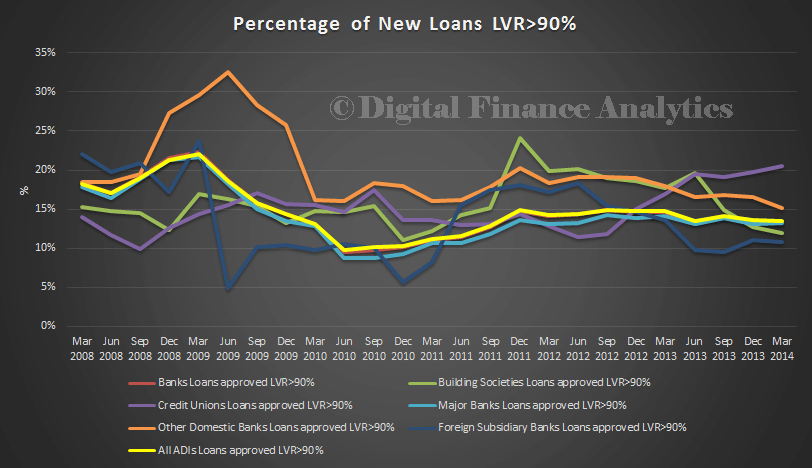
By Martin North, cross-posted from the Digital Finance Analytics blog:
APRA released its detailed quarterly housing loan statistics for ADI’s (so does not include the non-bank sector). ADIs’ total domestic housing loans were $1.2 trillion, an increase of $90.4 billion (8.2 per cent) over the year. There were 5.0 million housing loans outstanding with an average balance of $235,000.
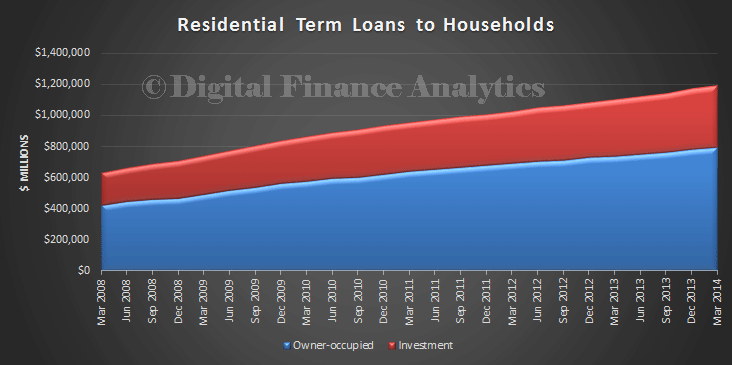
Investment loan balances are growing faster that owner occupied loans, though both grew more slowly in the last quarter. As we have suggested, overall growth is slowing, and we expect this to continue.
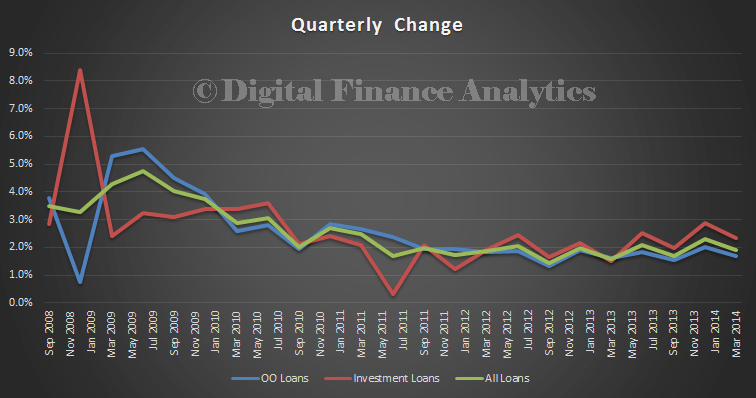
Interest only mortgages and loans with off-set facilities are growing the fastest by value.
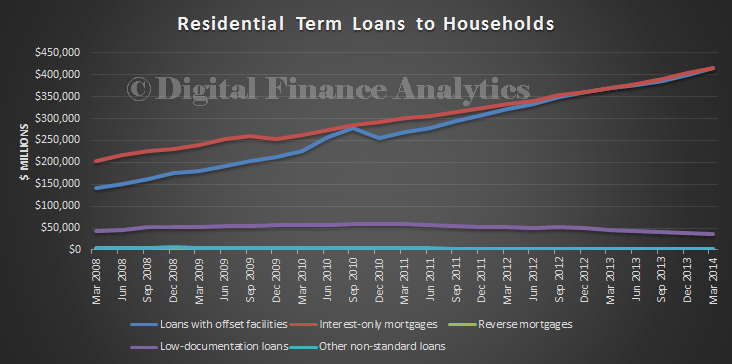
Loans with redraw facilities make up the largest number of loans.
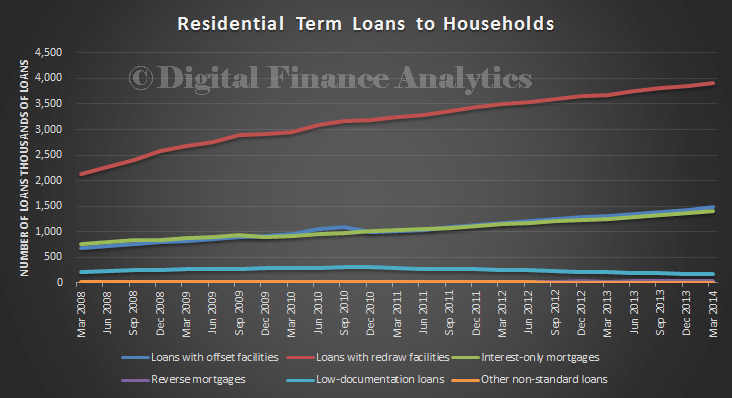
Average balances are slightly higher on interest only loans.
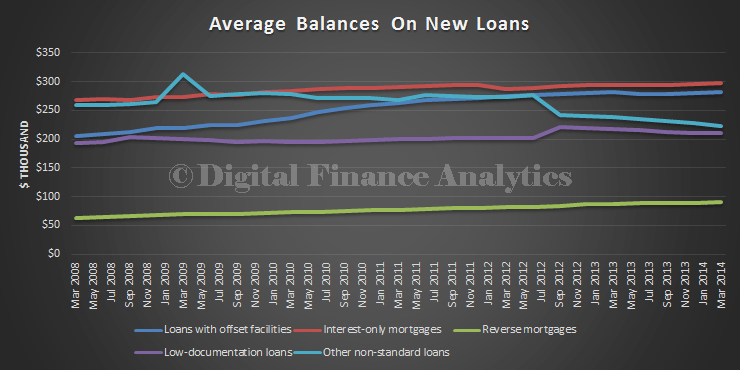
Looking across the types of ADI, we see that the major banks are writing the highest proportion of interest only loans. We also see credit unions and building societies writing more than they did (though still small in absolute terms).
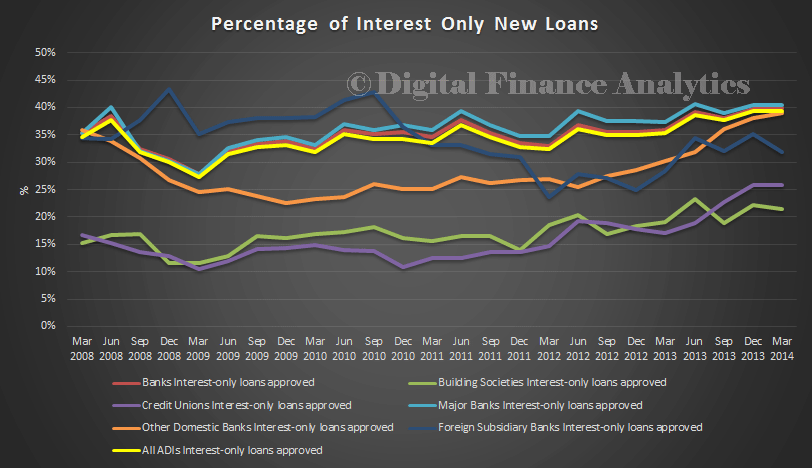
Low Documentation loans are hardly being written in the banking sector. We believe that there are more being written by the non-banks.
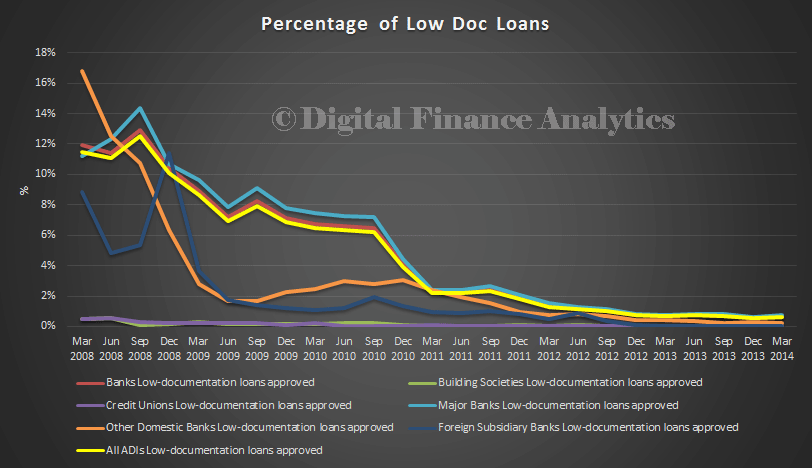 Only a small proportion of loans are outside normal serviceability criteria.
Only a small proportion of loans are outside normal serviceability criteria. 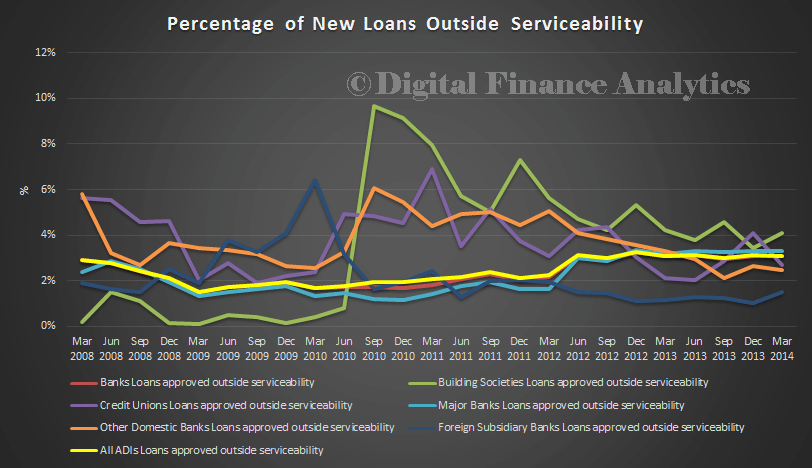 About 42% of loans come via third party channels (Mortgage Brokers), by value. We note that credit unions and building societies are using brokers more than they did, so incurring commission costs, and that foreign banks operating in Australia continue to use the broker channel the most.
About 42% of loans come via third party channels (Mortgage Brokers), by value. We note that credit unions and building societies are using brokers more than they did, so incurring commission costs, and that foreign banks operating in Australia continue to use the broker channel the most.
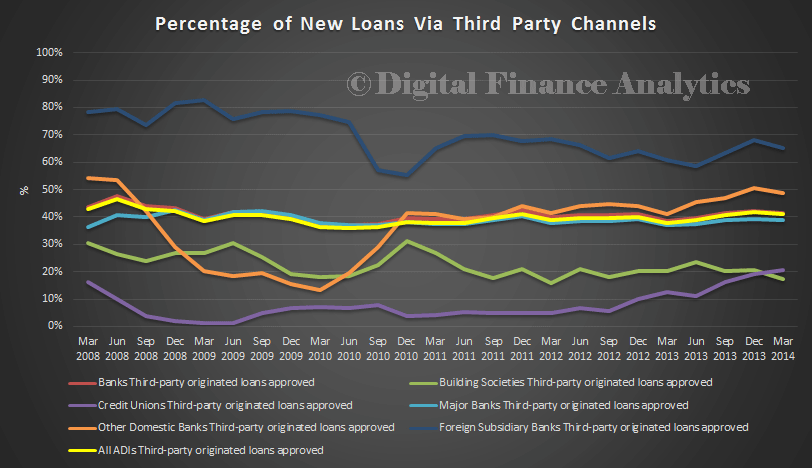 Turning to LVRs, we see that 14% of loans written in the quarter were above 90%, and 21% 80-90%.
Turning to LVRs, we see that 14% of loans written in the quarter were above 90%, and 21% 80-90%.
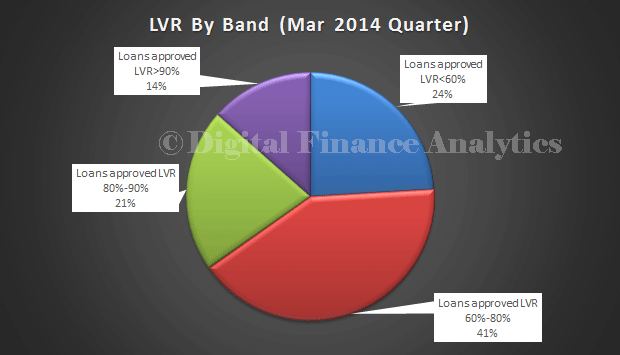 In trend terms, high LVR lending remains at levels not seen since the GFC. Lower LVR loans below 60% account for a smaller proportion of loans written, a reflection of high house prices.
In trend terms, high LVR lending remains at levels not seen since the GFC. Lower LVR loans below 60% account for a smaller proportion of loans written, a reflection of high house prices.
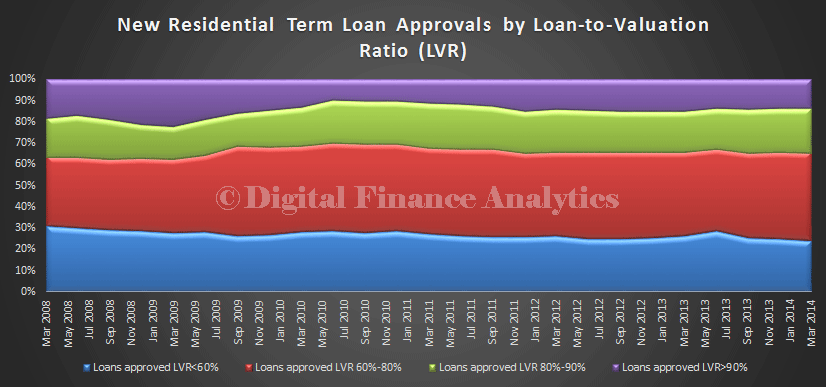 High LVR loans are being written by credit unions, where we have seen a significant change in strategy, whilst some other sectors are down. We believe the recently released APRA guidelines were largely aimed at some of the smaller players who are desperate for market share in a difficult market.
High LVR loans are being written by credit unions, where we have seen a significant change in strategy, whilst some other sectors are down. We believe the recently released APRA guidelines were largely aimed at some of the smaller players who are desperate for market share in a difficult market.
LVR’s in the 80-90 range register a rise from the foreign bank sector (off smaller numbers though) and a slight rise from the majors. We believe they have trimmed their lending criteria recently thanks to RBA and APRA pressure.
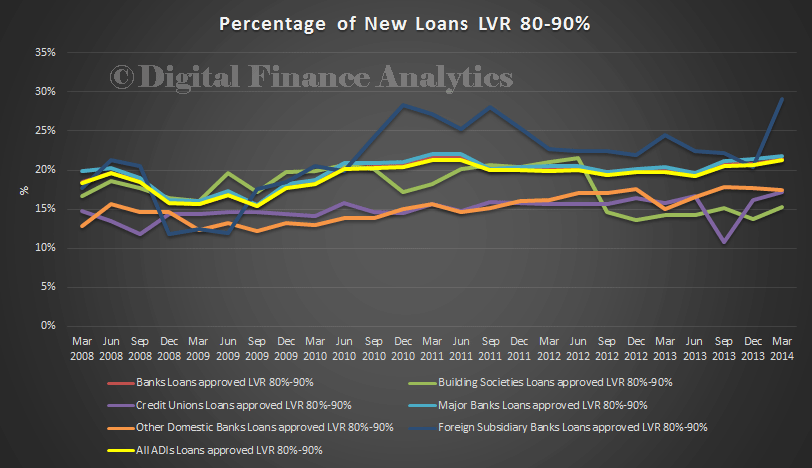
Finally, in the 60-80 range we see a relatively static picture, though with credit unions falling a little, and foreign banks rising a little.
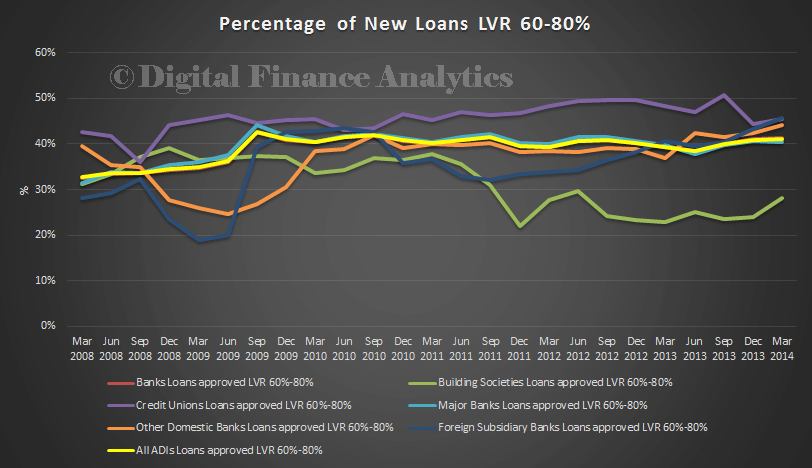
So, overall, the APRA data confirms what we already know, lending growth is subdued, even at record low interest rates. Some of the smaller players are pushing lending standards to write business, whist the larger players are maintaining lending quality standards. The sleepers are the rising level of interest only loans, and what the non-banking sector is doing. The non-banks disclosure is not what it should be, and their supervision concerning. The ~$110 billion of mortgage lending here should be a focus.

